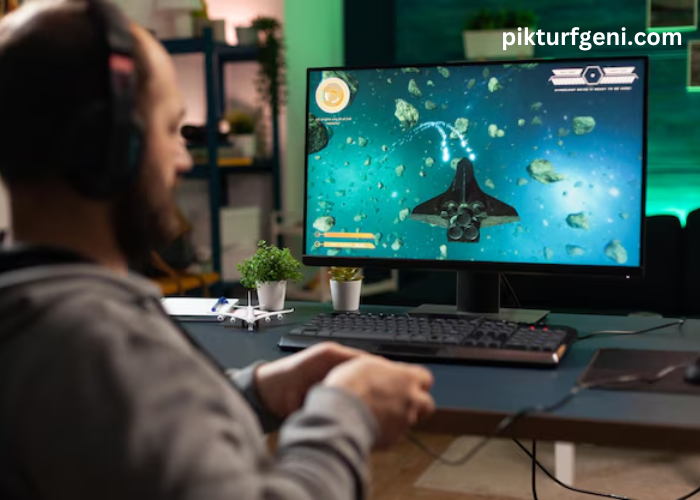Slot games are one of the most popular forms of gambling entertainment around the world, both in traditional casinos and online. Their appeal seems universal, pulling in millions of players each year. But what makes these games so engaging? The answer lies in the science of fun—slot game design is carefully crafted to tap into human psychology, creating experiences that are hard to resist.
In this article, we’ll explore the key psychological principles that make slot games so captivating, and how game designers use these insights to create an addictive gaming environment.
The Basics of Slot Game Design
At first glance, slot games may seem simple—just spin the reels and hope for a win. However, beneath the surface, there’s a sophisticated design process that makes the game enjoyable and keeps players coming back. Slot games are created with bright visuals, exciting sounds, and a dynamic interface. But beyond the aesthetic appeal, it’s the psychological triggers embedded in the gameplay that truly captivate players.
Visual and Auditory Stimulation
Slot machines are full of sensory cues that activate the brain’s pleasure centers. Flashing lights, vibrant colors, and loud, cheerful sounds are designed to stimulate a player’s senses. These elements create a thrilling environment, making the act of playing inherently exciting, regardless of whether a win occurs.
Music and sound effects also play a crucial role. Winning on a slot gacor hari ini machine is often accompanied by celebratory sounds like bells, chimes, or even a fanfare of music. These sounds are not just for entertainment; they act as positive reinforcement, encouraging players to associate these cues with the joy of winning, even if the wins are small.
The Illusion of Control
One of the key psychological tactics employed by slot game designers is giving players the illusion of control. Though slots are purely games of chance, they are designed to make players feel like they influence the outcome. Whether it’s pressing the “spin” button at just the right time or choosing how many paylines to activate, players often feel that their decisions matter, when in reality, the results are entirely random.
This illusion of control taps into a well-known cognitive bias: the tendency to overestimate one’s ability to control outcomes. As a result, players are more likely to feel responsible for their wins, further enhancing the satisfaction they get from the game.
The Psychology of Random Rewards
Slot games are rooted in the concept of random rewards, a phenomenon that has been studied extensively in the field of psychology. Random rewards occur when outcomes (like winning money) are given on an unpredictable schedule. Research shows that people are more likely to persist in behaviors when rewards are random rather than fixed.
Variable Reward Schedules
In behavioral psychology, this concept is known as a “variable-ratio schedule.” Slot games use this by rewarding players at unpredictable intervals. Players don’t know when the next win will come, but they know that if they keep playing, it eventually will. This unpredictability creates a powerful form of engagement—players become hooked on the idea that the next spin could be the one that brings a big payout.
This principle is the same one that drives social media users to check their notifications or gamblers to continue betting in other forms of gaming. The excitement of the unknown reward keeps players spinning the reels over and over again.
Near Misses and Their Psychological Impact
Slot games are also designed to include “near misses,” where a player almost wins but falls just short. This is another powerful psychological trigger. Studies have shown that near misses activate the same brain areas as actual wins. The player feels like they were so close to winning, which motivates them to keep playing, thinking that a big win is just around the corner.
Near misses exploit a human tendency to perceive patterns in randomness. The player may feel like they’re “due” for a win, even though each spin is independent and the odds remain the same.
Dopamine and the Brain’s Reward System
Dopamine, a neurotransmitter in the brain, is a key player in the slot game experience. It is often referred to as the “pleasure chemical” because it is released when we experience something enjoyable. Slot games are designed to trigger the release of dopamine, creating feelings of excitement and anticipation.
The Role of Anticipation
Interestingly, studies show that dopamine is released not just when we experience pleasure, but also in anticipation of it. Slot games capitalize on this by building excitement before each spin. The moment right before the reels stop spinning is a critical point in the gameplay experience. The brain is flooded with dopamine, heightening the sense of anticipation and making the experience feel rewarding, even when the outcome is a loss.
The Power of Small Wins
Slot games also make use of “frequent small wins” to keep players engaged. These small wins might not even cover the amount the player initially wagered, but they create a sense of progress. Psychologically, these frequent wins reinforce the behavior of playing the game, much like how small rewards encourage continued behavior in other aspects of life.
Conclusion
Slot game design is a fascinating intersection of technology and psychology. Game developers use a deep understanding of human behavior and cognitive biases to create experiences that are enjoyable, exciting, and, for some, hard to resist. By employing principles like the illusion of control, random rewards, and near misses, slot games tap into the brain’s reward system, keeping players coming back for more.
